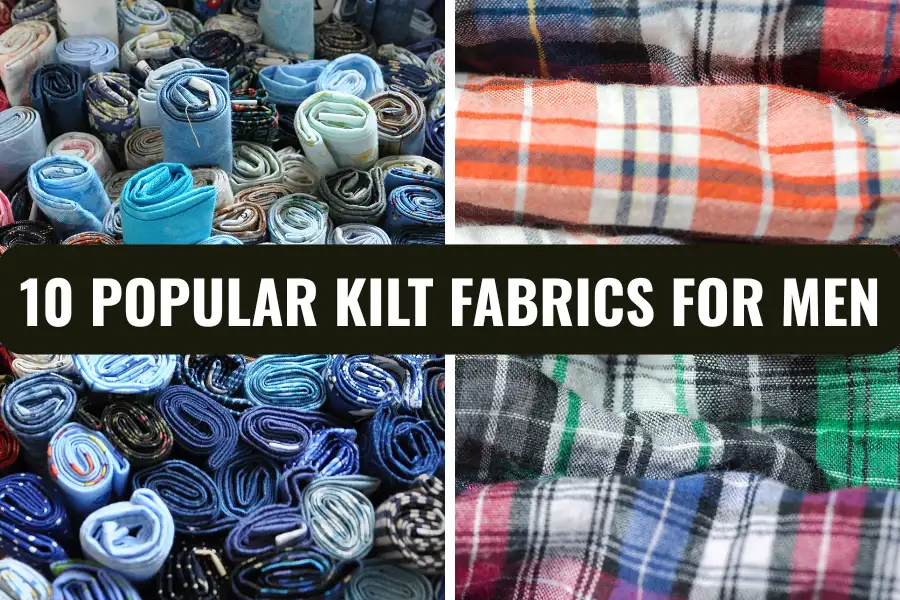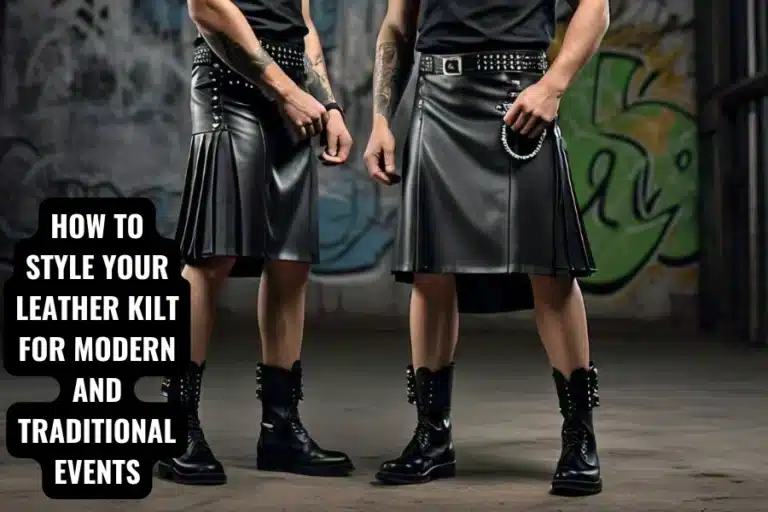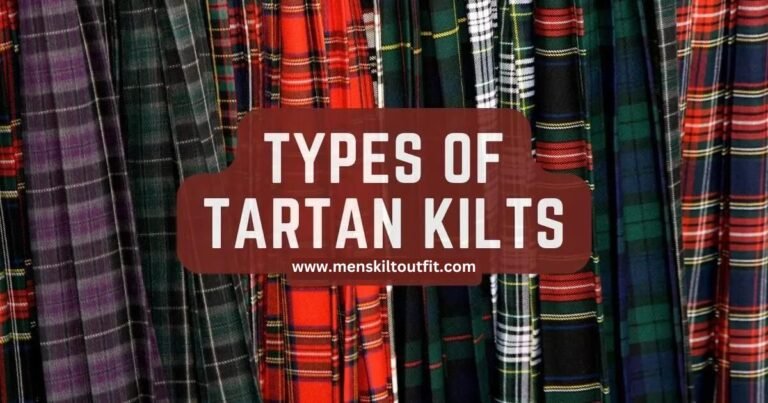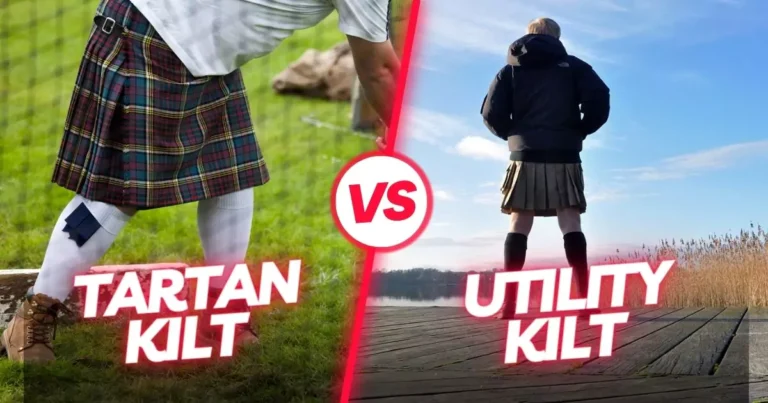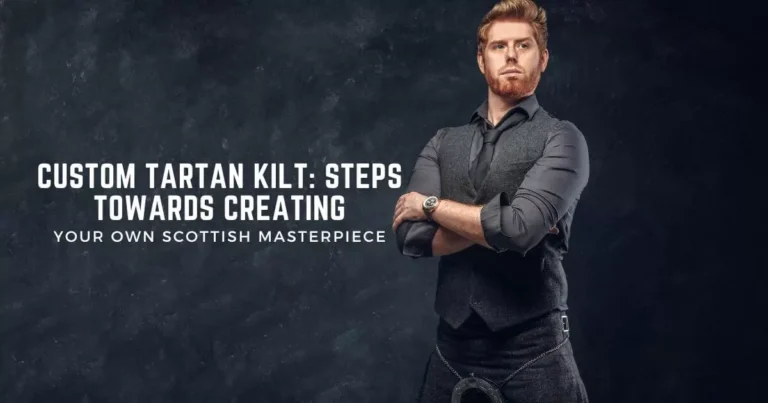10 Popular Kilt Fabrics For Men
Exploring how fabric choice shapes the look, feel, and function of kilts for men.
When most people think about kilts for men, they picture tartan. That iconic pattern—often red or green, with thick crisscrossing lines—feels inseparable from Scottish identity. And yes, for many, that’s the fabric of choice. But it’s far from the only one.
In fact, if you’ve ever tried shopping for a kilt online or in person, you’ve probably been surprised (maybe even overwhelmed) by just how many fabric options are out there. Traditional wool, of course. But also cotton, leather, denim, canvas. Even synthetics like poly-viscose, which you might not expect at all.
And it’s not just about look—it’s about purpose. Are you buying a kilt for a formal event, or are you planning to wear it on a hike? Do you care about breathability, structure, drape, or just how heavy it feels?
Below are ten of the most common (or interesting) fabrics used in mens kilts today. Not every material is right for every person or every use—but understanding the differences can help you make a smarter choice. Or at least avoid a few surprises.
1. 8-Yard Wool (Traditional Tartan)
This is the gold standard for Scottish kilts for men. Heavyweight, deeply pleated, and rich in texture, 8-yard wool kilts are designed for full movement and full formality. They drape beautifully and feel substantial—which is a good thing, though, admittedly, not always ideal in hot weather.
Most formal kilts are made from this. The wool often comes from well-known Scottish mills like Lochcarron or House of Edgar. Expensive? Usually. But the look and feel are hard to match.
2. 5-Yard Wool
Think of this as the younger cousin of the 8-yard. It’s lighter, uses less material, and costs a bit less too. But still retains the essential feel of a real wool kilt.
Many wearers find it a more comfortable, less bulky option for semi-formal events—or just personal preference. Personally, I found the 5-yard kilt to be more forgiving during long ceremonies where I had to stand for hours. That extra weight adds up, believe it or not.
3. Poly-Viscose
Some purists turn up their noses at synthetic blends, but poly-viscose kilts for men have their place. They’re wrinkle-resistant, machine-washable, and surprisingly soft. They also tend to be budget-friendly, which makes them a good entry point if you’re not ready to drop hundreds of dollars just yet.
One small note: they don’t have the same depth or texture as wool. Still, from a few feet away, most people wouldn’t know the difference.
4. Acrylic
Acrylic kilts—often called “budget kilts”—are usually mass-produced and marketed as costume pieces. That said, some are decent enough for casual wear or one-time use. They’re lightweight, easy to care for, and often under $100.
But if you’re hoping for longevity or a tailored look, acrylic won’t quite deliver. They tend to hang a little stiffly and don’t breathe well.
5. Cotton
For those who like a softer, more broken-in feel, cotton kilts are appealing. They’re especially common in utility kilts for men—where comfort and flexibility matter more than ceremony.
The downside? They wrinkle easily, and some can fade after washing. But for everyday wear or a summer outing, cotton is breathable and generally low-maintenance.
6. Canvas
This one’s become more popular with the rise of rugged, tactical-style kilts. Canvas is stiff, durable, and feels more like workwear than traditional garb. Brands like Utilikilts use it to create heavy-duty pieces meant to withstand tools, movement, and weather.
You wouldn’t wear a canvas kilt to a wedding. But for camping, hiking, or just wanting something with presence? It works.
7. Leather
Mens Leather kilts divide opinion. Some think they’re too edgy, too modern, or too far from tradition. Others love them—especially for nights out, biker gatherings, or just when you want to make a statement.
They’re warm, though. Really warm. And you’ll want to clean them carefully (usually with a damp cloth or leather-safe product). But the weight, the texture… it’s hard to ignore. There’s something bold about wearing one. I tried one once, and honestly, I wasn’t sure it was “me,” but it definitely made an impression.
8. Denim
Yes, denim kilts exist. And they’ve quietly gained popularity among younger wearers or those who want a casual kilt that doesn’t take itself too seriously.
They look like denim skirts at a glance, but with pleats and pockets that feel distinctly kilt-like. Some are quite stylish, and the fabric ages well. Definitely not for traditional ceremonies—but maybe that’s the point.
9. Hybrid Fabrics
Some kilts combine two fabrics—usually a wool or tartan base with contrasting panels made from leather, canvas, or even mesh. These hybrids walk a fine line between form and function.
They’re more common in fashion-forward or utility designs, and they offer a bit of everything: movement, texture, and sometimes a rebellious streak. Not for everyone. But if you want a kilt that stands out, hybrids have personality.
10. Linen
Linen kilts are rare but appreciated by those in hot climates. The fabric is breathable, lightweight, and has a natural rumpled charm that some find appealing. Others find it too soft, too shapeless—but that’s part of the trade-off.
They don’t hold pleats as firmly as wool, and they require some extra care. But on a hot summer day, a linen kilt just makes sense. I remember wearing one at a garden party years ago—it wrinkled like mad, but I didn’t care. I was comfortable. And that felt like a win.
So, Which Kilt Fabric Should You Choose?
There’s no universal answer here. It depends on your lifestyle, your climate, and your reason for wearing a kilt in the first place.
Want a formal, heritage-rich look? Go for an 8-yard wool or a high-quality 5-yard option. Prefer something light and easy for festivals? Poly-viscose or cotton might be a better fit. If durability is key, consider canvas. And if you want to stand out? Leather, denim, or a hybrid kilt could be surprisingly fun.
The truth is, most people don’t stop at one kilt. They find a reason to get a second… maybe a third. It’s a bit like watches or jackets—different fabrics for different moods, occasions, or seasons.
And that’s not a bad thing.

